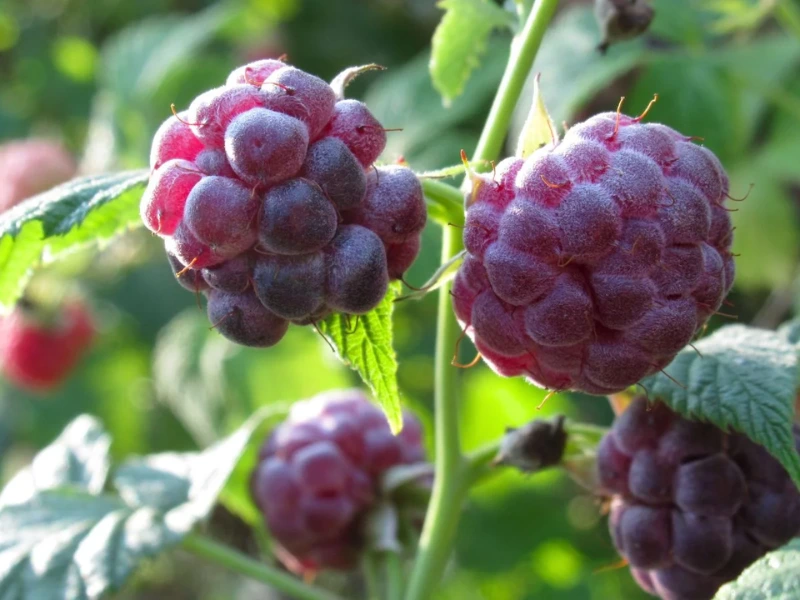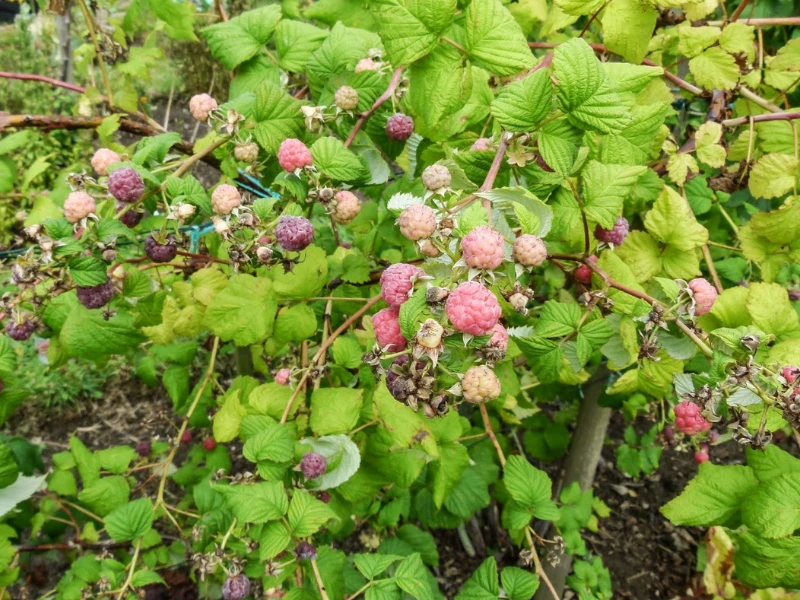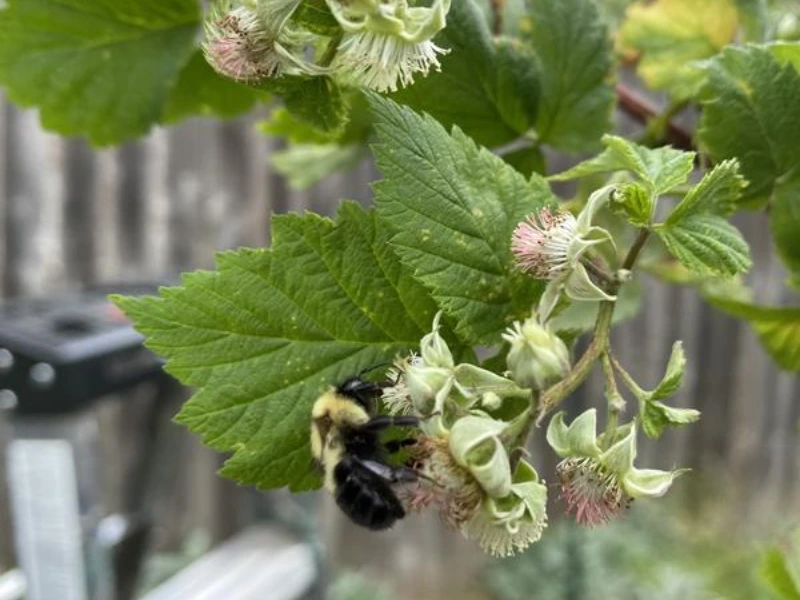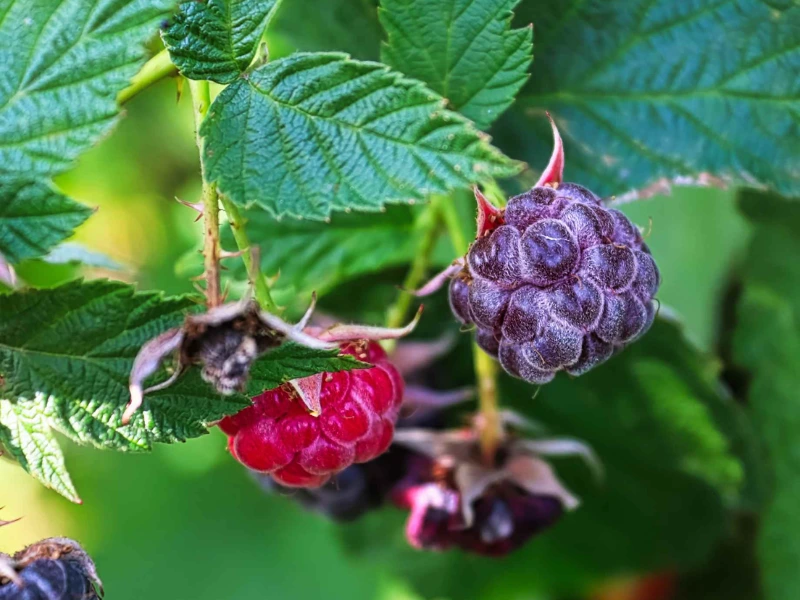Guides
Glencoe Raspberry Care Guide: Grow Thornless Berries Easily
Have you ever wondered how to grow raspberries that don’t scratch your arms, don’t demand tons of space, and still burst with flavor? Or maybe you’re just tired of your raspberry plants dying off or producing weak harvests? If that sounds like you, the Glencoe raspberry might be exactly what you need.
This guide is your go-to roadmap for growing and caring for Glencoe raspberries — the stunning, thornless, purple raspberry hybrid that’s perfect for home gardens across the U.S. Whether you’re growing them in raised beds, containers, or tucked in with your other fruit bushes, I’ll walk you through everything you need to know to succeed.
What is the Glencoe Raspberry?

If you’re on the hunt for a raspberry that combines rich flavor, easy care, and stunning looks, the Glencoe Raspberry is your dream come true. This unique berry isn’t just any raspberry—it’s a thoughtfully bred hybrid with roots (quite literally) in Scotland.
Originally developed by the brilliant minds at the Scottish Crop Research Institute, the Glencoe Raspberry is a cross between red and black raspberry varieties. The result? A lush, purplish raspberry that offers the best of both worlds: the tangy-sweet brightness of red raspberries and the deep, complex flavor of black raspberries. It’s a taste experience that feels gourmet, straight from your garden.
Key Features
-
Botanical name: Rubus idaeus ‘Glencoe’
-
Mature Size: 3-4 feet tall, 2-3 feet wide
-
USDA Growing Zones: 5-9
-
Days to Maturity: 1-2 years after planting
-
Type: Hybrid purple raspberry (a cross between red and black raspberry)
-
Thornless: Yup, no gloves needed!
-
Compact growth: Ideal for small gardens and container growing
-
Self-pollinating: You don’t need a second plant to get fruit
-
Fruit Season: Mid-summer (usually late June to early July)
Planting Glencoe Raspberry
Best Time to Plant Glencoe Raspberry

The perfect time to plant your Glencoe Raspberry is early spring or fall—basically, when the soil is easy to work with and the scorching summer heat hasn’t crashed the party yet. Aim for those sweet-spot months when the weather is mild and forgiving.
Choosing the Right Location
Glencoe Raspberries are total sun lovers. Pick a location that gets at least 6 to 8 hours of direct sunlight each day. If you’re gardening in a toasty zone like USDA Zone 9, a little afternoon shade can help keep your plants happy and productive.
Soil Preparation
Your raspberries will thank you for pampering their roots. They thrive in well-draining soil—sandy loam or loamy textures are perfect. Mix in organic goodness like compost to enrich the soil, and aim for a slightly acidic pH between 6.0 and 6.5. Think of it as prepping a cozy, nutrient-rich bed for them to settle into.
How to Plant Glencoe Raspberry
Here’s your step-by-step:
-
Dig a hole that’s about twice as wide and just as deep as the plant’s root ball.
-
Place the plant in the hole, ensuring the crown is level with the surrounding soil.
-
Backfill gently and tamp down the soil.
-
Water it in well and add mulch around the base.
-
Keep plants about 2-3 feet apart if planting in a row.
Container Planting Tips
No garden? No problem! Glencoe Raspberries actually do great in containers. Choose a pot that holds at least 5 gallons and make sure it has excellent drainage (raspberries hate wet feet!). Fill it with a quality potting mix blended with compost or aged manure. As the plant grows, offer some support with a tomato cage or trellis—think of it like giving your raspberry a dance partner to lean on.
Glencoe Raspberry Care

Watering
Glencoe Raspberries love consistent moisture, but they don’t want soggy feet. Deep watering once or twice a week is ideal, especially during dry spells. This encourages roots to grow deeper and stronger. Skip the frequent light sprinkles—think of it like a solid, satisfying drink rather than a tease of a sip.
Fertilizing
A little nutrition goes a long way. Use a balanced fertilizer like 10-10-10 in early spring to support new growth, and give it another dose after fruiting to help it bounce back. Prefer organic? You’re in luck! Fish emulsion, compost tea, or well-aged compost all provide great natural nourishment without overloading the plant.
Pruning or “Punching”
Glencoe is a primocane variety—meaning it fruits on first-year canes (yay for faster fruit!). That gives you two easy options for pruning:
-
All-in Method: After the fall harvest, cut all canes down to the ground. This resets the plant and preps it for fresh, fruit-bearing growth next season.
-
Selective Pruning: Prefer a lighter crop with a bit of a head start? In early spring, remove only the dead or damaged canes and leave the healthy ones standing.
Either method works; it just depends on your berry goals!
Seasonal Plant Care Tips
-
Spring: Apply a layer of mulch to lock in moisture and keep pesky weeds at bay. It’s like tucking your plant in with a cozy blanket.
-
Summer: Stay on top of watering—especially during hot, dry spells—and keep an eye out for pests like aphids or spider mites.
-
Fall: After harvesting those juicy berries, it’s time to cut back the canes and clean up any plant debris.
-
Winter: In colder climates, insulate the root zone with a thick layer of mulch or straw. It’ll help your raspberry sleep snugly until spring.
Potting and Repotting
If you’re growing your Glencoe in a container, check in every 2 to 3 years. When roots start crowding or poking out of drainage holes, it’s time for a fresh start. Repot using rich, fresh soil, trim the canes back to reduce stress, and you’re good to go. Your plant will appreciate the room to stretch!
How to Propagate Glencoe Raspberry
Want more Glencoe Raspberries without buying new plants? Propagation is your garden’s version of copy-paste—and yes, it’s just as satisfying!
You’ve got a couple of easy options:
-
Tip Layering: In early spring, gently bend a healthy cane so its tip touches the soil. Secure it in place with a rock or garden pin, and wait for nature to work its magic. In a few weeks, roots will develop at the buried tip. Once it’s rooted and thriving, simply snip it from the mother plant and transplant it to a new home.
-
Dividing Root Clumps: Also best done in early spring, this method involves digging up an established plant and dividing the root mass into smaller sections, each with at least one healthy cane or bud. It’s like sharing your favorite recipe—with dirt.
How to Get Glencoe Raspberry to Bloom

Patience is key, but a few simple tricks can speed things along. Glencoe Raspberries typically bloom in mid-to-late summer, depending on your USDA growing zone.
To give your plants the best shot at a bountiful bloom:
-
Max Out the Sun: These plants are sun-chasers. Make sure they get a minimum of 6-8 hours of direct sunlight daily.
-
Feed the Soil: Start the season with a balanced fertilizer or a good compost boost. Happy soil equals happy blooms.
-
Prune Smart: Over-pruning can delay flowering. Follow the primocane pruning style and avoid trimming off all your new growth unless you’re going for the full-reset fall method.
Harvesting and Storing Glencoe Raspberries
Berries are ready when they turn a rich, deep purple and easily slip off the cane with a gentle tug. That usually happens mid to late summer and may continue into early fall.
Pick them gently by hand every 2-3 days during peak season. Pro tip—use shallow containers to prevent squishing your precious cargo. These berries are delicate and deserve some TLC.
Fresh raspberries will stay good in the fridge for about 3 to 5 days. If you’re lucky enough to have a bumper crop, freeze them on a tray first before transferring to bags—this way, they won’t clump together.
Troubleshooting Glencoe Raspberries
Common Problems
-
Yellowing Leaves: If your raspberry’s foliage is starting to look a little jaundiced, the culprit is often too much water or poor soil drainage. Check your soil—if it feels soggy or compacted, consider amending it with sand or compost to improve aeration and drainage. In containers, make sure those drainage holes are clear and doing their job.
-
Small, Disappointing Berries: Tiny berries can mean your plant needs more sunlight or a nutritional boost. Make sure it’s getting 6-8 hours of sun daily and consider feeding it with a balanced fertilizer or compost tea during the growing season.
-
No Fruit at All: If your Glencoe Raspberry is all leaves and no berries, over-pruning could be the sneaky culprit. Remember, this is a primocane variety—it fruits on first-year growth. So if you cut down everything in spring, you might have snipped away your future harvest. Oops! Just a reminder to prune either in late fall or only remove dead/damaged canes in spring.
Pests and Diseases
-
Spider Mites & Aphids: These tiny suckers can leave your leaves curled or speckled. The fix? Spray the undersides of leaves with neem oil or insecticidal soap. A good blast from the hose can also knock them off their game.
-
Japanese Beetles: These shiny invaders love raspberry leaves. Hand-picking in the early morning (when they’re sleepy) works wonders. Or treat with insecticidal soap if they’re out of control.
-
Verticillium Wilt: This soil-borne disease causes wilting, yellowing, and eventual death of canes. Unfortunately, there’s no cure, but prevention is key. Don’t plant raspberries where nightshades (like tomatoes, potatoes, or eggplants) have grown recently, and rotate your crops every few years if possible.
FAQs About Glencoe Raspberries
1. Are Glencoe Raspberries Self-Pollinating?
Yes! These independent little overachievers don’t need a partner to produce fruit. One plant is plenty to get you started on a delicious harvest.
2. Can I Grow Glencoe Raspberries Indoors?
While they really thrive best outdoors with loads of sun and fresh air, you can grow them in a large container on a bright, sunny balcony or patio. Just be sure they get those vital 6–8 hours of direct sunlight daily.
3. Do I Need to Stake or Support Them?
Yep! Even though Glencoe has a compact habit, the canes can get a bit floppy when loaded with fruit. A simple tomato cage, bamboo stakes, or a small trellis will keep them upright and easy to harvest.
4. How Long Before They Start Producing Fruit?
If you plant in early spring, you might be enjoying your first berries by late summer or early fall of the same year. They don’t keep you waiting too long!
Final Thought
If you’re looking for a low-maintenance, high-reward fruit bush, the Glencoe raspberry checks all the boxes. It’s thornless, productive, compact, and ridiculously tasty. With a little care, you’ll enjoy bowls of fresh berries right from your garden—no scratches, no fuss.
Looking for more tips? Check out my guides on the blog. Let me know in the comments if you’ve tried Glencoe raspberries or if you’re planning to plant one this season!
From top-quality fruit plant varieties to beginner-friendly starter kits, we’ve got everything you need to grow lush, thriving Glencoe raspberries—and more! Browse our Nursery Plant collection and start planting with confidence today.


7 Vegetables to Plant in December for a Bountiful Winter Harvest
Winter gardening is a challenge many new gardeners shy away from. But if you’re among [...]
Dec
9 Common Christmas Cactus Problems and How to Fix Them
Have you ever walked past your Christmas cactus and wondered why it suddenly looks sad? [...]
Nov
Swedish Ivy Care: How to Grow a Healthy, Thriving Plant
Have you ever looked at your Swedish Ivy and wondered why the leaves are turning [...]
Nov
Avoid These 10 Garlic Planting Mistakes for Bigger, Healthier Bulbs
Growing garlic at home is one of the most satisfying things a gardener can do [...]
Nov
How to Prevent Christmas Cactus Bud Drop: Tips for a Healthy Bloom
Have you ever noticed your beautiful Christmas cactus (Schlumbergera) starting to lose its buds just [...]
Nov
Discover 7 Stunning Types of Night-Blooming Cereus
Have you ever waited for a flower that only opens at night and then disappears [...]
Nov